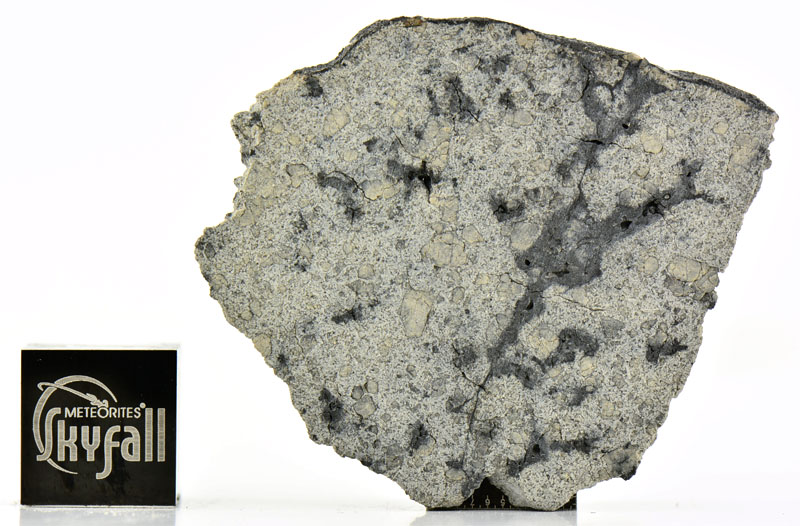Shergottite

Igneous stony meteoriteMeteorite composed of silicate minerals, but that may have up to 25% Ni-Fe metal by weight. Stony meteorites are extremely heterogeneous as a group, ranging from samples of primordial matter that have remained more or less unchanged for the last 4.56 Ga (chondrites) to highly evolved younger rocks from differentiated with a Martian origin consisting mainly of plagioclaseAlso referred to as the plagioclase feldspar series. Plagioclase is a common rock-forming series of feldspar minerals containing a continuous solid solution of calcium and sodium: (Na1-x,Cax)(Alx+1,Si1-x)Si2O8 where x = 0 to 1. The Ca-rich end-member is called anorthite (pure anorthite has formula: CaAl2Si2O8) and the Na-rich end-member is albite Click on Term to Read More (or a shocked glass of plagioclase composition) and pyroxeneA class of silicate (SiO3) minerals that form a solid solution between iron and magnesium and can contain up to 50% calcium. Pyroxenes are important rock forming minerals and critical to understanding igneous processes. For more detailed information, please read the Pyroxene Group article found in the Meteoritics & Classification category. Click on Term to Read More. They are the most abundant type of SNC meteorites and the type member is the Shergotty meteoriteWork in progress. A solid natural object reaching a planet’s surface from interplanetary space. Solid portion of a meteoroid that survives its fall to Earth, or some other body. Meteorites are classified as stony meteorites, iron meteorites, and stony-iron meteorites. These groups are further divided according to their mineralogy and Click on Term to Read More, which fell in India in 1865. Shergottites are igneous rocks of volcanicIgneous rock that forms from cooling magma on the surface of a planet or asteroid. or hypabyssal (shallow plutonicGeology: Igneous intrusive body that forms when magma is injected into host rocks and solidifies. Plutons occur in the crust of asteroids undergoing differentiation or planets. Named after Pluto, the Roman god of the underworld. Plutonic rocks are the rocks found within a pluton. Astronomy: Category of planet including all Click on Term to Read More) origin, and can easily resemble terrestrial rocks. They all have exceptionally young crystallizationPhysical or chemical process or action that results in the formation of regularly-shaped, -sized, and -patterned solid forms known as crystals. Click on Term to Read More ages of 150-200 Ma, and usually show signs of severe shock metamorphismMetamorphism produced by hypervelocity impact between objects of substantial size moving at cosmic velocity (at least several kilometers per second). Kinetic energy is converted into seismic and heat energy almost instantaneously, yielding pressures and temperatures far in excess those in normal terrestrial metamorphism. On planetary bodies with no atmosphere, smaller Click on Term to Read More (typically plagioclase has been converted to maskelyniteNatural glass composed of isotropic plagioclase produced during shock metamorphism (not melting) at pressures of ~30 GPa. Maskelynite is commonly found in shergottites though also found in some ordinary chondrites, HED and lunar meteorites. It is also found in association with meteorite impact craters and crater ejecta. Named after British Click on Term to Read More). Shock metamorphism probably occurred when the shergottites were blasted off the Martian surface during an impact event.
Some or all content above used with permission from J. H. Wittke.







